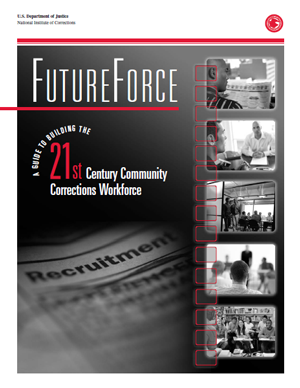21st century community corrections workforce
|
Community corrections faces a crucial challenge in the first decade of the 21st century.
More than five million people are now on probation or parole in the United States (Glaze and Palla, 2005: 1), and their numbers are not declining. What is declining is the number of experienced employees in this profession—people who are responsible for offender management and, ultimately, community safety. With thousands of community corrections workers poised for retirement and a shrinking pool of qualified applicants to replace them, workforce planning has become a critical priority. FutureForce: A Guide to Building the 21st Century Community Corrections Workforce could, therefore, be considered a “wake-up call” for community corrections to proactively address this reality. As such, this guide is designed to provide correctional leaders with the information and strategies needed to recruit, develop, and retain quality personnel. For in the final analysis, community safety is not primarily the result of innovative public policy, sophisticated technology, or groundbreaking techniques. Even the best policy, the latest technology, and the newest innovations depend on people for effective implementation and successful outcomes. It is people who are, after all, entrusted with managing the five million offenders under community supervision—and with safeguarding the many more of us whose well-being is in their hands every day. Authors: Jeanne B. Stinchcomb Susan W. McCampbell Elizabeth P. Layman |



